Its the ultimate kitsch product. Coke. All style and form. No substance. Something with multiple layers of meaning exposing a vast fictionality of the object situated in a space between reality and illusion. Kitsch. Both imitative and its negation, kitsch cannot really be defined from a single vantage point. Like Duchamp’s signed “R.Mutt” urinal, it cannot really lend itself to a singular negative definition, but then Coke, like urine, there is a gap between the image and object, illusion and reality. The vicarious experiences, the faked sensations. The epitome of the spurious. “kitsch pretends to demand nothing of its customers except their money- not even their time.” ( Greenberg )
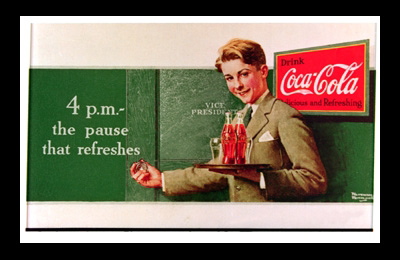
---This billboard ad from 1930 sports a tagline ("The pause that refreshes") that Ad Age called the third best of the last century. This ad, showing a young office clerk bringing two Cokes to his boss, was notable for another reason: It was one of six ads that artist Norman Rockwell painted under commission by Coca-Cola.--- Read More:http://images.businessweek.com/ss/06/07/coke_ads/source/4.htm
Kitsch has been perceived as a layer of dust that blankets things and permits or lends itself to a nostalgic recreation of reality. A reborn sentimentality, what Milan Kundera called “the second tear.”
So, it becomes evident that the ubiquitous saturation of commercialism, technology, and speed provide an ideal breeding ground of the bacteria, the malarial stagnant ponds that make up artificial triteness. In an upside down world, artists are perplexed by the absence of a meaningful symbolic language- the kind that existed in the time of Bosch or Jan van Eyck- while brand design like the Coca-Cola and McDonalds achieve global recognition. As pornography represents sexual objectification, kitsch, corporate kitsch, is a porno of spiritual longings, some quite profound, otherwise their is no explaining this bastardization, this weight of inertia that represses and quantifies all in its path. Yes, these represent the “freedom” of Western culture being peddled globally, trinkets of consumer desires, which is really an industry of image production.
…In 1941, longtime Coca-Cola leader Robert Woodruff said that any person in uniform should get a bottle of Coke for 5 cents, wherever he is and whatever it costs the Company. During WWII, a special group of Coca-Cola employees called Technical Observers were asked to fulfill Woodruff’s promise. The “TOs” supervised the shipment and operation of 64 complete bottling plants that distributed over 5 billion bottles of Coca-Cola to servicemen and women….
…One hundred forty-eight men served as TOs, compete with Army officer’s rank, pay and uniforms that had a unique identification patch. Two TOs were killed in the line of duty….
Billy Wilder did a film on Coca Cola called One-Two-Three just as the Berlin Wall was rising in 1961. It was surprisingly transgressive, though satire itself is actually accepting and even submissive to the established structure. Nonetheless, Wilder took pot shots, sniping at capitalism, consumerism, Communism and in this war of attrition he targeted fascists, middle-class families, rock music, Coke and the cold war. Not hard to see the connection. It was a cynical and pessimistic view, that fifty years later revealed the ominous power of western market based capitalism and the powerful ideology that arises when idealism is matched with desire connected with a physical product. Nostalgia and confusion with enough ambiguity to trust others to provide memory as a substitute for experience.
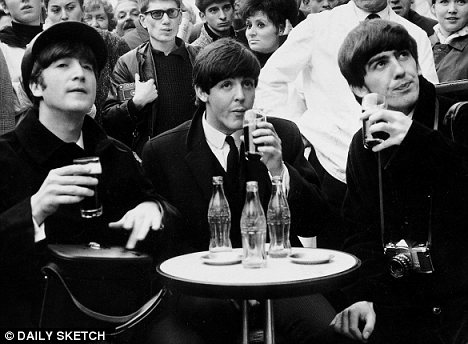
---Warhol the archetypal business artist, as he called himself, and a very successful one at that and Michelangelo are equally "divine" in the eyes of capitalism, however nominally creative Warhol’s art is compared to Michelangelo’s. His full-bodied figures have a spiritual depth and expressive richness that Warhol’s shallow, superficially expressive figures lack. They’re all successful "marketing personalities," as Fromm called the new kind of personality produced by capitalism. Constantly selling themselves to the world, and as such more outwardly than inwardly oriented, their inner lives are unavoidably flat, stale, and unprofitable (like rubbish) compared to the intense inner lives of Michelangelo’s grand figures. Warhol’s insightful rendering even suggests that the marketing personality has no inner life just the semblance of one (thus, ironically, the marketing personality is problem-free) ---Read More:http://www.artnet.de/magazine/the-triumph-of-shit/ image:http://www.dailymail.co.uk/health/article-1357787/Coca-cola-Pepsi-ingredient-cancer-risk-Call-ban-colouring-agent.html
….Back to that finale, a bravado sequence that moves at the speed of thought, as Cagney’s McNamara improvises his way to transform Horst Buchholz from a wet-behind-the-ears Communist to a spit-polish Capitalist in under 40 minutes. Well, at least it’s supposed to be improvised, but it doesn’t quite feel that way – it sounds and looks thoroughly written every step of the way. All the same, it’s a jaw-dropper, the way it summons every plot and subplot laid throughout what preceded it and weaves it into a three ring circus with Cagney the ringmaster-standin for Wilder. It’s an awesome, relentless juggernaut of a sequence that, allegorically speaking, combines Soviet unilateralism, American showmanship and German efficiency. Looking at it meta, it also evokes the Hollywood studio system at the peak of its creative and collaborative energies; as such, timed at the demise of that same system, it makes for a fitting swan song. Read More:http://alsolikelife.com/shooting/2009/11/one-two-three-1961-billy-wilder/
—
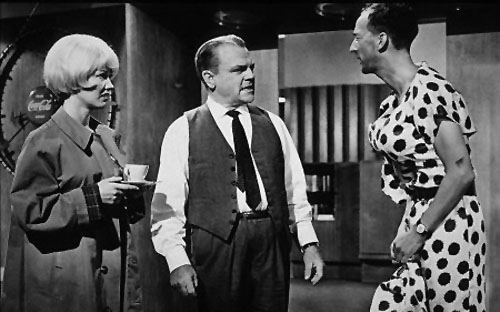
Billy Wilder. One, Two, Three.---The film is about Communism vs. Capitalism in Berlin, just before the Berlin Wall border was built. James Cagney plays the head of a Coca-Cola bottling plant in West Berlin who's dying for a promotion to get him out of Germany and into London. To curry favor with his boss, he hosts the boss's visiting daughter from Atlanta, Scarlett, who decides to run off with a Communist agitator.--- Read More:http://www.slackerwood.com/node/695
Kundera explores kitsch in the sense of edulcorated, edifying, “Victorian” representation, and he thinks naturally of “socialist realism” and of political propaganda, the hypocritical mask of all horrors. Sabina, who, having established herself in the United States, loves New York for what there is there of “non-intentional beauty,” “beauty by error,” is upset when she sees American kitsch, Coca-Cola-like publicity, surface to remind her of the radiant images of virtue and health in which she grew up. But Kundera justly specifies:
Kitsch is the aesthetic idea of all politicians and all political parties and movements. Those of us who live in a society where various political tendencies exist side by side and competing influences cancel or limit one another can manage more or less to escape the kitsch inquisition … But whenever a single political movement corners power, we find ourselves in the realm of totalitarian kitsch….
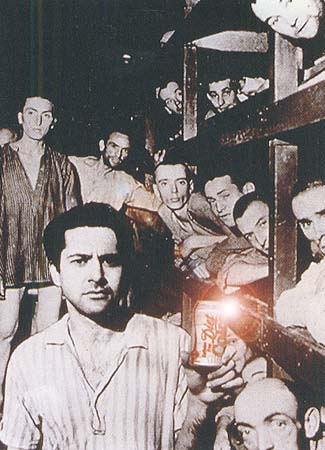
Alan Schechner. ---Seeing society from the revolutionary outsider perspective of the avant-garde underclass, which since Courbet has identified with the rebellious social underclass ("the people’s revolution"), one supposedly sees the "higher truth" about society: it’s a sham. Of course, today the avant-garde underclass has become part of the insider Capitalist upperclass, but still identifies with the underclass, as Pop Art, with its use of underclass imagery kitsch rubbish, the people’s art indicates. The underclass still has the ethical cachet associated with defiant rebelliousness, even though its Dream of Revolution has long since been replaced by the American Dream. These days Courbet’s country people have become the suburban masses. The Big Lie marches on, but it changes shape with chameleon-like cleverness. --- Read More:http://www.artnet.de/magazine/the-triumph-of-shit/ image:http://angelfloresjr.multiply.com/journal/item/2040
…The step that remains to be taken is to free oneself of the fear of kitsch, once having saved oneself from its totalitarianism, and to be able to see it as an element among others, an image that quickly loses its own mystifying power to conserve only the color of passing time, evidence of mediocrity or of yesterday’s naïveté. This is what seems to me to happen to Sabina, in whose story we can recognize a spiritual itinerary of reconciliation with the world. At the sight, typical of the American idyll, of windows lit in a white clapboard house on a lawn, Sabina is surprised by an emotional realization. And nothing remains but for her to conclude: “No matter how we scorn it, kitsch is an integral part of the human condition.” Read More:http://www.novelguide.com/a/discover/nfs_18/nfs_18_00020.html
Read More:http://members.tripod.com/~al_asad/HISP200-1pdf.pdf
ADDENDUM:
Many interesting things have been said about Coke that the book leaves out, though perhaps not as willfully. Where’s the quote from Slavoj Žižek explaining the undefined “it” that Coke says it is? For Žižek, as for the early Coke executive Robert Woodruff, who said that “Coca-Cola should always be within an arm’s reach of desire” (that’s in the book), Coke represents the eternally unsatisfied emptiness we seek to fill with something ungraspable, something Coke made eminently graspable in the form of its perfectly curved bottle, which was designed so you could recognize it in the dark by touch. The “contour bottle” debuted in 1916, the same year Einstein proved via the general theory of relativity that space was curved. A significant coincidence, I think. Other famous commenters on Coke who are MIA include Billy Wilder, who made a whole Mad Men–era movie about selling Coke behind the Iron Curtain, and Jean-Luc Godard, who mentioned or showed Coke in almost every movie he made in the 1960s. If Coke can claim Warhol and Miller for their own, surely they will absorb others.
These days the Coke commercials on TV feature sleepwalkers with subconscious urges to drink Coke and people who see the Coke curve everywhere they look. Coke is the Master Controller of desire in these ads, a Big Brother who knows our urges better than we do. Interactive Internet versions of their TV spots suggest we go to work for them: “See what it’s like to be a worker in the Happiness Factory and help deliver bottles of Coke!” Read More:http://www.theparisreview.org/blog/2011/06/02/the-coke-side-of-life/


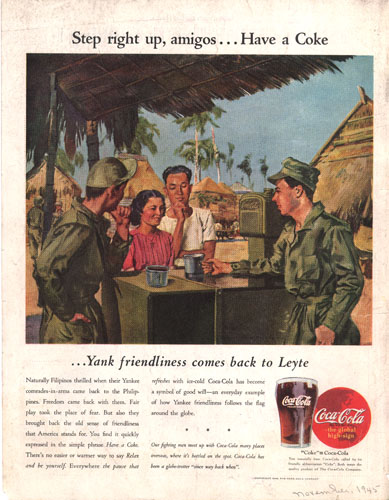
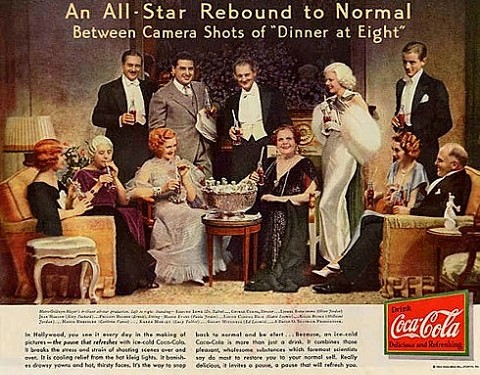



 COMMENTS
COMMENTS